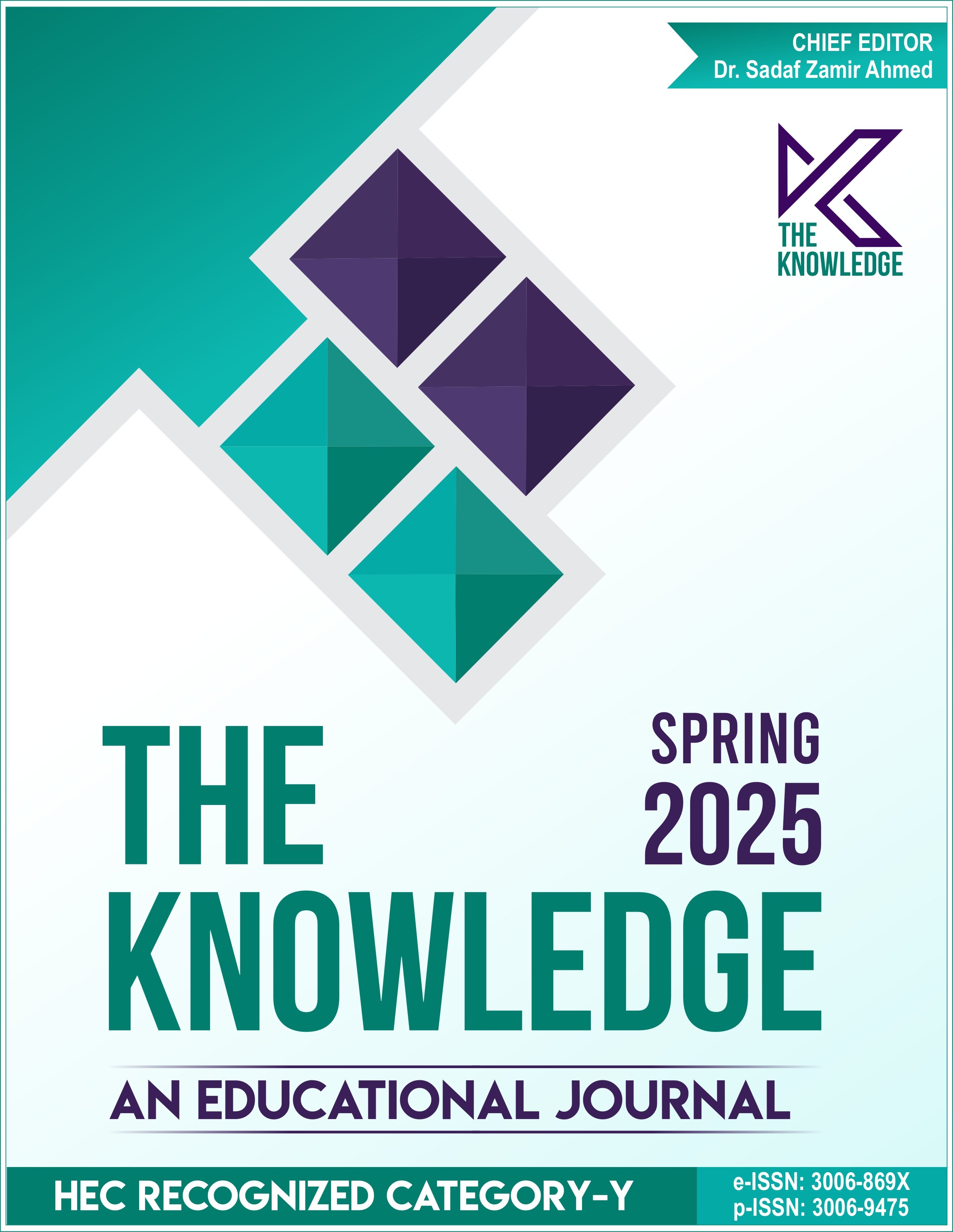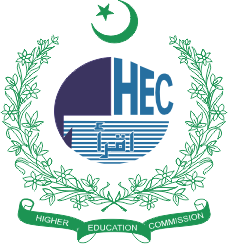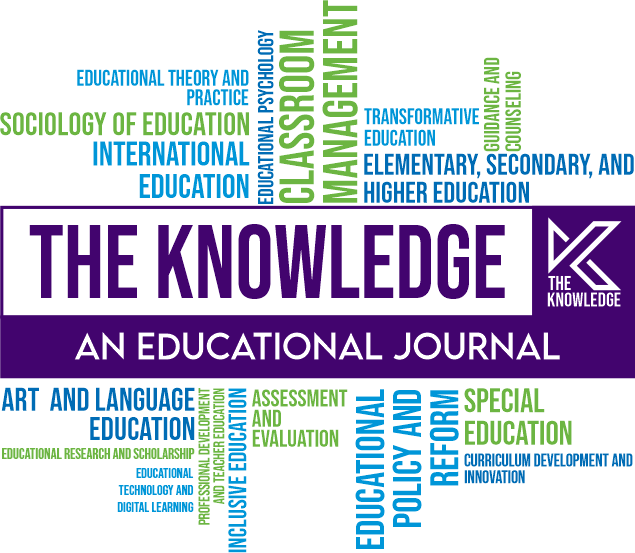Situational Leadership and Teacher Effectiveness: A Study of Secondary Schools in District Dera Ismail Khan
DOI:
https://doi.org/10.63062/tk/2k25b.42055Keywords:
Situational Leadership, Teacher Effectiveness, Secondary Schools, Education, Dera Ismail KhanAbstract
This study investigates the impact of situational leadership on teacher effectiveness in secondary schools in District Dera Ismail Khan, Pakistan. Situational leadership, which adapts leadership styles based on teacher needs and circumstances, is examined in relation to its influence on teaching performance. A quantitative approach was employed, with data collected from 270 female secondary school teachers using a structured questionnaire. The results indicate that there is a strong correlation between situational leadership (directive and supportive styles) and teacher effectiveness and this demonstrates the relevance of adaptive leadership as a way of promoting better success rates in schooling. This study recommends that school administrators adopt situational leadership strategies to enhance the performance of teachers.
References
Bass, B. M., & Riggio, R. E. (2006). Transformational leadership. Psychology Press.
Boyatzis, R. E., Goleman, D., & Rhee, K. (2000). Clustering competence in emotional intelligence: Insights from the Emotional Competence Inventory (ECI). Handbook of emotional intelligence, 99(6), 343-362. https://www.eiconsortium.org/pdf/eci_acticle.pdf
Bush, T. (2020). Theories of educational leadership and management. Sage
Bush, T., & Glover, D. (2016). School leadership and management in South Africa: Findings from a systematic literature review. International Journal of Educational Management, 30(2), 211–231. https://doi.org/10.1108/ijem-07-2014-0101
Creswell, J. D., Pacilio, L. E., Lindsay, E. K., & Brown, K. W. (2014). Brief mindfulness meditation training alters psychological and neuroendocrine responses to social evaluative stress. Psychoneuroendocrinology, 44, 1–12. https://doi.org/10.1016/j.psyneuen.2014.02.007
Fullan, M. (2018). Research into educational innovation. In The management of educational institutions (pp. 245-261). Routledge.
Hallinger, P. (2011). Leadership for learning: lessons from 40 years of empirical research. Journal of Educational Administration, 49(2), 125–142. https://doi.org/10.1108/09578231111116699
Hallinger, P. (2018). Bringing context out of the shadows of leadership. Educational Management Administration & Leadership, 46(1), 5–24. https://doi.org/10.1177/1741143216670652
Harris, A., & Jones, M. (2018). Leading professional learning with impact. School Leadership & Management, 39(1), 1–4. https://doi.org/10.1080/13632434.2018.1530892
Harris, A., Jones, M., & Hashim, N. (2021). System leaders and system leadership: exploring the contemporary evidence base. School Leadership & Management, 41(4-5), 1–22. https://doi.org/10.1080/13632434.2021.1889492
Hattie, J., & Zierer, K. (2017). 10 mindframes for visible learning: Teaching for success. Routledge.
Hersey, P., & Blanchard, K. H. (1969). Management of Organizational Behavior: Utilizing Human Resources. Prentice Hall, New Jersey.
Hersey, P., & Blanchard, K. H. (1977). Management of Organizational Behavior 3er Edition-Utilizing Human Resources. Prentice Hall, New Jersey.
Hidayat, R., Patras, Y. E., Hardhienata, S., & Agustin, R. R. (2020). The effects of situational leadership and self-efficacy on the improvement of teachers’ work productivity using correlation analysis and SITOREM. COUNS-EDU: The International Journal of Counseling and Education, 5(1), 6. https://doi.org/10.23916/0020200525310
Khan, N. A., Khan, A. N., Soomro, M. A., & Khan, S. K. (2020). Transformational leadership and civic virtue behavior: Valuing act of thriving and emotional exhaustion in the hotel industry. Asia Pacific Management Review, 25(4), 216–225. https://doi.org/10.1016/j.apmrv.2020.05.001
Khan, S. A. R., Ahmad, Z., Sheikh, A. A., & Yu, Z. (2022). Digital transformation, smart technologies, and eco-innovation are paving the way toward sustainable supply chain performance. Science Progress, 105(4), 003685042211456. https://doi.org/10.1177/00368504221145648
Khan, S. A. R., Zia‐ul‐haq, H. M., Umar, M., & Yu, Z. (2021). Digital technology and circular economy practices: An strategy to improve organizational performance. BUSINESS STRATEGY & DEVELOPMENT, 4(4). https://doi.org/10.1002/bsd2.176
Leithwood, K., & Sun, J. (2012). The nature and effects of transformational school leadership: A meta-analytic review of unpublished research. Educational Administration Quarterly, 48(3), 387–423. https://doi.org/10.1177/0013161x11436268
Leithwood, K., Harris, A., & Hopkins, D. (2020). Seven strong claims about successful school leadership revisited. School Leadership & Management, 40(1), 5–22. https://doi.org/10.1080/13632434.2019.1596077
Lijun, W., & Te, H. C. (2024). The role of primary school principals and administrators in promoting Student achievement, Teacher effectiveness, and a positive school culture. Journal of Roi Kaensarn Academi, 9(8).
Lunenburg, F. C., & Ornstein, A. (2021). Educational administration: Concepts and practices. Sage Publications.
Shah, M. J., Silka, M. J., Silva, J. N. A., Balaji, S., Beach, C. M., Benjamin, M. N., Berul, C. I., Cannon, B., Cecchin, F., Cohen, M. I., Dalal, A. S., Dechert, B. E., Foster, A., Gebauer, R., Gonzalez Corcia, M. C., Kannankeril, P. J., Karpawich, P. P., Kim, J. J., Krishna, M. R., & Kubuš, P. (2021). 2021 PACES expert consensus statement on the indications and management of cardiovascular implantable electronic devices in pediatric patients. Cardiology in the Young, 31(11), 1738–1769. https://doi.org/10.1017/S1047951121003413
Somech, A., & Ron, I. (2007). Promoting Organizational Citizenship Behavior in Schools: The Impact of Individual and Organizational Characteristics. Educational Administration Quarterly, 43(1), 38–66. https://doi.org/10.1177/0013161x06291254
Stronge, J. H. (2018). Qualities of effective teachers. Ascd.
Yin, Y., Stecke, K. E., & Li, D. (2017). The evolution of production systems from Industry 2.0 through Industry 4.0. International Journal of Production Research, 56(1-2), 848–861. https://doi.org/10.1080/00207543.2017.1403664




